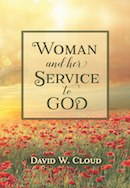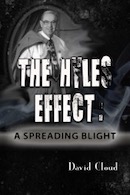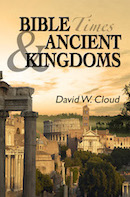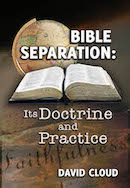866-295-4143, fbns@wayoflife.org
The North American turkey gots its name by mistaken identity. The Spanish discovered it more than 400 years ago and took it back to Europe. There the English mistook it for an African guinea fowl they called a “turkey” because it came to England by way of Turkey. Thus, the North America turkey isn’t from Turkey, and the native American Indian isn’t from India.
Adult males weigh 18-30 pounds, and females, 8-12 pounds.
The tasty bird was hunted almost to extinction in the 19th century, but conservation efforts have brought the population back to about 7 million.
Turkeys congregate in flocks and inhabit forests that have plenty of their favorite foods: nuts, seeds, insects, and wild berries. For this reason they are sometimes called forest turkeys. They spend their days on the ground hunting for food and their nights perched in branches of trees.
The wild turkey’s dark coloring provides camouflage in shady forests. The female is fairly unremarkable in subtle brown, black, gray, and tan coloring, though there is a green iridescence or sheen to her feathers in bright light.
It’s the male that is particularly striking when strutting his breeding plumage. He does this to seek a mate and also to warn away interlopers. The flesh on his head and neck turn bright iridescent blue and red. Peacock style, he fans a display of 18 chestnut-brown tail feathers with bold black and white and tan bars. His body inflates, showing off bronze-green iridescent wing feathers with white bars, displayed in fascinating layers. He also struts a little dance.
The male gets his name “gobbler” from the strong gobbling sound he makes. He is also called a tom. His gobble can be heard by females a mile away.
Both males and females communicate with a variety of cackles, purrs, yelps, and whistles.
The male has a beard of a stringy black feather hanging down from his chest.
The male also has a long protuberance hanging down in front of or to the side of its beak that is called a snood. It fills with blood during courtship and turns bright red. Dominant males tend to have longer snoods and can get quite snoody.
Both males and females have a flap of skin called a wattle or dewlap hanging from the chin and connected to the neck.
The bags of skin hanging from the turkey’s neck are called caruncles. When engorged with blood, the male’s caruncles turn vivid shades of red, white, or blue, as does the wattle. This is thought to play a role in attracting a mate.
Turkeys generally meander around searching for food, but they can be fast when they want, both on land and air. They can run up to 25 miles per hour and fly up to 55 miles per hour for short distances.
The turkey’s eyes are powerful. The eyes are spaced far apart on both sides of the turkey’s head and give it a visual field of 270 degrees (humans have 180 degrees). The turkey can focus clearly throughout its field of sight. It can see predators a mile or more away. And it can see ultraviolet light.
The female does all of the work of incubating the eggs and raising the chicks (called poults). She lays 8 to 15 eggs and sits on them for 25 days until they hatch. Until the poults can fly, which is about two weeks, the mother hen roosts with them on the ground. After that they roost in trees, but the chicks stay with the mother through the first year.
Studies by Richard Buchholz at the University of Florida have found that the unfeathered skin of the turkey’s head and neck has an important role in regulating body temperature. The skin allows for heat dissipation and thermal conductance. This allows the bird to live in regions of more extreme temperature.
Benjamin Franklin told his daughter in a letter that the turkey would be a better symbol for America than the bald eagle, since it is “a much more respectable bird.” He didn’t like the fact that the bald eagle will steal food from other birds, such as the osprey, and can be driven away by smaller birds.
The commercial turkeys are bred for weight and are too large and fat to fly or even to mate. They are artificially inseminated.
The record wild turkey weighed 17 kilograms (37 pounds), while the record commercial turkey was a tom weighing 40 kilos (86 pounds). Its name was Tyson, and when he was auctioned off for charity in England he sold for $6,692.
- Receive these reports by email
- www.wayoflife.org
______________________
Sharing Policy: Much of our material is available for free, such as the hundreds of articles at the Way of Life web site. Other items we sell to help fund our expensive literature and foreign church planting ministries. Way of Life's content falls into two categories: sharable and non-sharable. Things that we encourage you to share include the audio sermons, O Timothy magazine, FBIS articles, and the free eVideos and free eBooks. You are welcome to make copies of these at your own expense and share them with friends and family. You may also post parts of reports and/or entire reports to websites, blogs, etc as long as you give proper credit (citation). A link to the original report is very much appreciated as the reports are frequently updated and/or expanded. Things we do not want copied and distributed are "Store" items like the Fundamental Baptist Digital Library, print editions of our books, electronic editions of the books that we sell, the videos that we sell, etc. The items have taken years to produce at enormous expense in time and money, and we use the income from sales to help fund the ministry. We trust that your Christian honesty will preserve the integrity of this policy. "For the scripture saith, Thou shalt not muzzle the ox that treadeth out the corn. And, The labourer is worthy of his reward" (1 Timothy 5:18). Questions? support@wayoflife.org
Goal:Distributed by Way of Life Literature Inc., the Fundamental Baptist Information Service is an e-mail posting for Bible-believing Christians. Established in 1974, Way of Life Literature is a fundamental Baptist preaching and publishing ministry based in Bethel Baptist Church, London, Ontario, of which Wilbert Unger is the founding Pastor. Brother Cloud lives in South Asia where he has been a church planting missionary since 1979. Our primary goal with the FBIS is to provide material to assist preachers in the edification and protection of the churches.
Offering: Offerings are welcome if you care to make one. If you have been helped and/or blessed by our material offerings can be mailed or made online with with Visa, Mastercard, Discover, or Paypal. For information see: www.wayoflife.org/about/makeanoffering.html.





